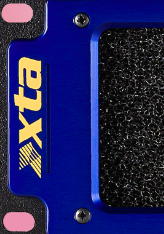Today sees the release of dynamic EQ in XTA DPA and MC2 Delta amplifiers. Now, up to two bands of dynamic EQ are available per input, and as well as managing the four quadrants of dynamic processing (boost below, boost above, cut below, cut above), they can be configured as a PEQ, low shelf, high shelf, or full bandwidth dynamic control.
20 years ago XTA launched arguably the first digital implementation of dynamic EQ in the SIDD processor. Ten years ago this was implemented in the manufacturer’s 5 series of dynamic processors. These enhancements have been much emulated in both processors and consoles alike.
XTA and MC2’s suite of dynamic tools have been optimised to solve common sound management issues, whether that be too loud, too quiet, or not loud or quiet enough.



